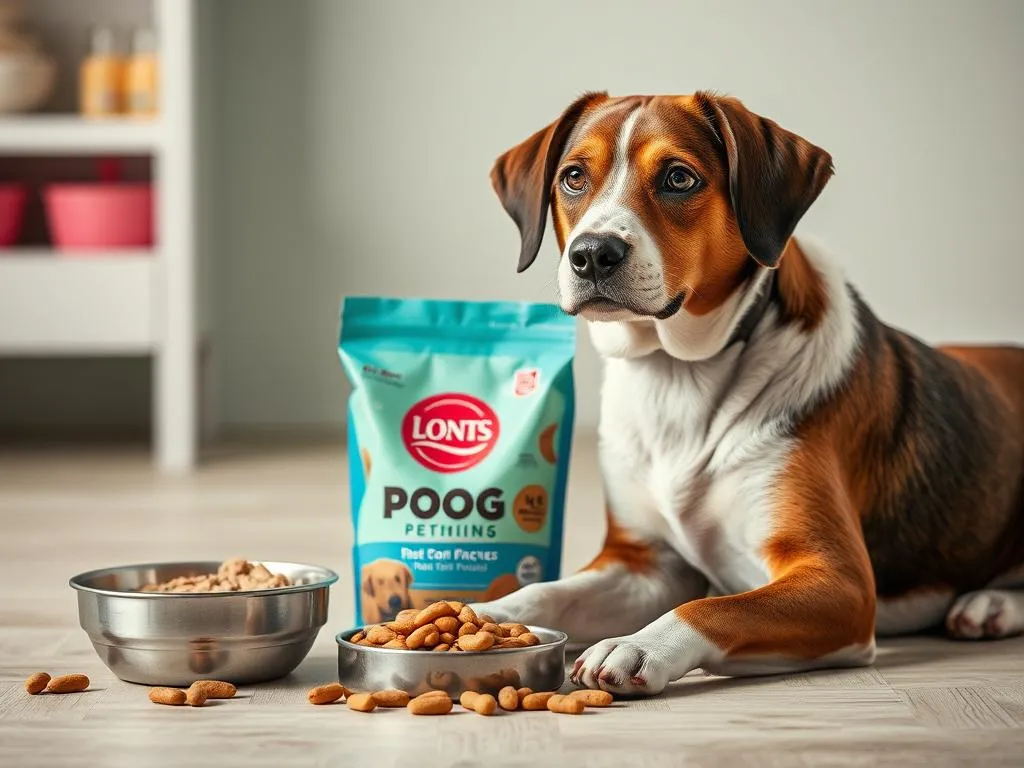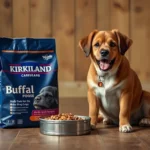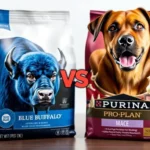
Dog nutrition is fundamental to maintaining the overall health and happiness of our canine companions. Just like humans, dogs require a well-balanced diet to thrive, influencing everything from their physical health to their behavior. The right nutrition can boost energy levels, support a healthy immune system, and even enhance mood and behavior. In this guide, we’ll explore the essentials of dog nutrition, the different types of dog food available, how to choose the best dog foods, and address common misconceptions that pet owners face.
Understanding Dog Nutrition
Basic Nutritional Requirements
At the core of dog nutrition are macronutrients: proteins, fats, and carbohydrates. Each plays a vital role in a dog’s diet:
- Proteins provide the building blocks for muscles, skin, and other tissues. They are crucial for growth, maintenance, and overall health.
- Fats are a concentrated source of energy and help in the absorption of fat-soluble vitamins. They also contribute to a healthy skin and coat.
- Carbohydrates supply energy and can promote digestive health when they come from quality sources like whole grains and vegetables.
Micronutrients, which include vitamins and minerals, are also essential. They support various bodily functions, including bone health, blood clotting, and immune response. Additionally, water is crucial for all bodily functions and should always be available to your dog.
Life Stages and Nutritional Needs
Dogs have different nutritional needs at various life stages, which can greatly influence their health:
-
Puppy Nutrition: Puppies require a diet rich in proteins and calories to support their rapid growth and development. Their diets should include high-quality protein sources and be formulated specifically for puppies to ensure they get the necessary nutrients.
-
Adult Dog Nutrition: Adult dogs need a balanced diet that maintains their health without leading to obesity. This involves a careful mix of protein, fats, carbohydrates, vitamins, and minerals tailored to their size and activity level.
-
Senior Dog Nutrition: As dogs age, their metabolism slows, and they may require fewer calories but more specialized nutrients to manage health issues. Senior dog foods often focus on joint health, weight management, and digestive support.
Types of Dog Food
Dry Dog Food (Kibble)
Dry dog food, or kibble, is one of the most popular choices among pet owners.
Benefits:
– Convenient and easy to store
– Helps keep teeth clean due to its crunchy texture
– Generally more affordable than wet food
Drawbacks:
– Some dogs may find kibble less palatable
– Can be lower in moisture content, which is essential for hydration
Key Ingredients to Look For:
– High-quality protein sources as the first ingredient
– Whole grains or vegetables for carbohydrates
– Healthy fats like fish oil or chicken fat
Recommended Brands:
– Blue Buffalo
– Orijen
– Wellness CORE
Wet Dog Food (Canned)
Wet dog food is another choice that many pet owners consider.
Benefits:
– Higher moisture content, which can help with hydration
– Often more palatable for picky eaters
Drawbacks:
– Can be more expensive than dry food
– Requires refrigeration after opening
Key Ingredients to Look For:
– Real meat as the primary ingredient
– Minimal fillers or artificial preservatives
Recommended Brands:
– Hill’s Science Diet
– Royal Canin
– Nutro Ultra
Raw Dog Food
The raw dog food diet has gained popularity among pet owners seeking a more natural option.
Overview:
This diet typically includes raw meat, bones, fruits, and vegetables, aiming to mimic what dogs would eat in the wild.
Benefits:
– Can lead to improved coat condition and energy levels
– May reduce allergies in some dogs
Challenges:
– Requires careful planning to ensure a balanced diet
– Potential for bacterial contamination if not handled properly
Safety Considerations:
Always consult a veterinarian when considering a raw diet, and ensure proper hygiene when preparing and storing raw food.
Homemade Dog Food
Homemade dog food allows pet owners to have full control over their dog’s diet.
Pros:
– Tailored to meet specific dietary needs
– Can be made with fresh, high-quality ingredients
Cons:
– Requires knowledge of nutritional balance
– May be time-consuming to prepare
Nutritional Balance:
When preparing homemade meals, it’s essential to include proteins, carbohydrates, fats, and a variety of vegetables.
Sample Recipe:
– 1 cup of cooked chicken (diced)
– 1/2 cup of brown rice
– 1/4 cup of carrots (cooked and chopped)
– 1/4 cup of peas
– A teaspoon of fish oil
Specialized Diets
Some dogs may require specialized diets due to health concerns or allergies.
Grain-Free Diets:
These diets eliminate grains and are often marketed for dogs with grain sensitivities. However, consult a veterinarian, as not all dogs require a grain-free diet.
Limited Ingredient Diets:
These diets contain fewer components and are beneficial for dogs with food allergies. They simplify the diet, allowing for easier identification of allergens.
Prescription Diets:
Dogs with specific health issues may need prescription diets designed to manage conditions like kidney disease, obesity, or diabetes.
How to Choose the Best Dog Food
Reading Dog Food Labels
Understanding dog food labels is crucial to selecting the best dog foods. Look for:
- Ingredient Lists: The first few ingredients should be high-quality protein sources.
- Nutritional Adequacy Statement: This indicates whether the food meets the AAFCO standards.
- Avoiding Fillers: Identifying harmful additives like by-products, artificial colors, and excessive fillers is vital.
Life Stage Considerations
Choosing food based on your dog’s life stage, size, and breed is essential. Puppies, adult dogs, and seniors all have different dietary needs. Additionally, consider specific health concerns, such as allergies or obesity, when selecting food.
Consulting with a Veterinarian
Always seek professional advice when it comes to your dog’s diet. A veterinarian can provide personalized recommendations based on your dog’s specific health needs and lifestyle. It’s essential to approach this discussion with an open mind and ask questions about dietary options.
Common Misconceptions About Dog Food
Grain Myths
Many pet owners believe that grains are harmful to dogs, but this is not universally true. Most dogs digest grains without issues, and grains can provide beneficial nutrients and fiber.
Myth of All-Natural and Organic Labels
Just because a dog food is labeled “natural” or “organic” doesn’t automatically mean it’s the best option. Always read the ingredient list and nutritional information to understand what you’re feeding your dog.
The “One Size Fits All” Approach
Each dog is unique, and their dietary needs can vary significantly. Factors like age, size, breed, and health conditions all play a role in determining the best food for your pet.
Tips for Transitioning Dog Food
Gradual Transition Techniques
When changing your dog’s food, it’s crucial to do it gradually to avoid gastrointestinal upset.
Step-by-Step Guide:
1. Start by mixing 75% of the old food with 25% of the new food for the first few days.
2. Gradually increase the new food to 50% while decreasing the old food over a week.
3. Continue this process until you reach 100% of the new food.
Monitoring Health During Transition
As you transition, keep an eye on your dog’s behavior and health. Watch for signs of food intolerance, such as upset stomach, diarrhea, or changes in energy levels. If you notice any concerning symptoms, consult your veterinarian.
Conclusion
Proper dog nutrition is crucial for ensuring your furry friend leads a happy and healthy life. By understanding their dietary needs, exploring different types of dog food, and making informed choices, you can select the best dog foods tailored to your pet’s unique requirements. Each dog is an individual, and what works for one might not work for another, so it’s essential to stay informed and attentive to your dog’s health and preferences. Share your experiences and tips in the comments below!









